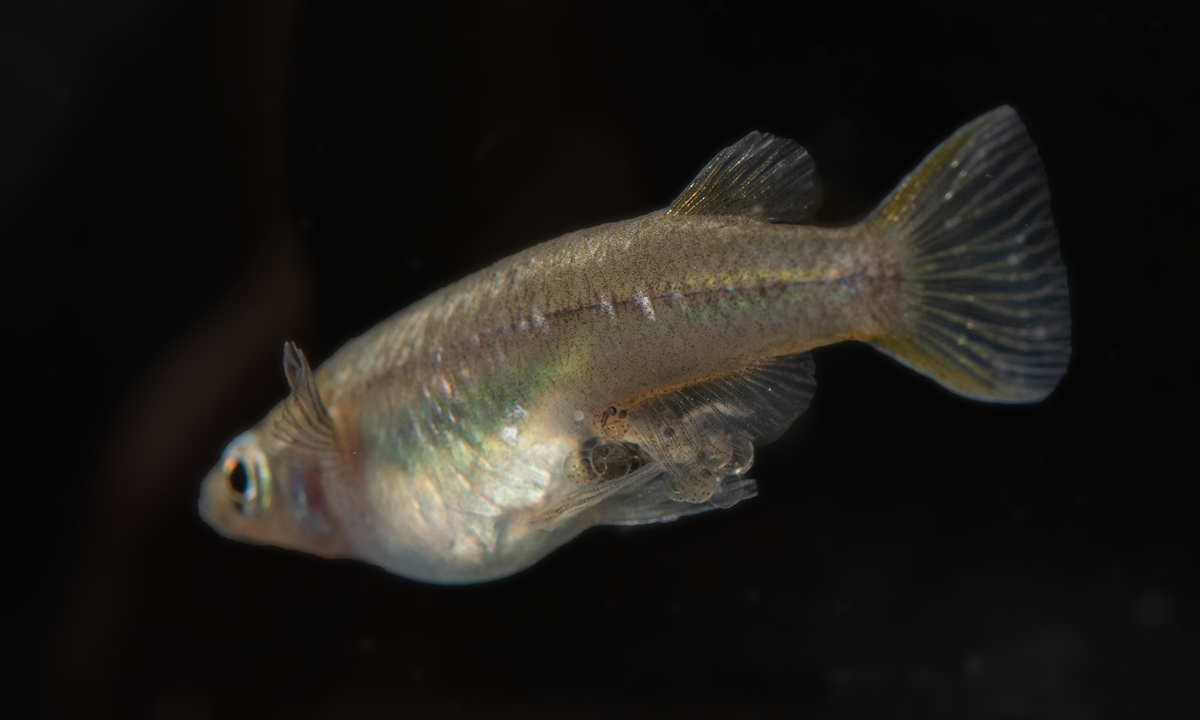What factors have facilitated the evolution of pelvic brooding?
Female of the pelvic brooding species Oryzias eversi. © Jana Flury
The ricefishes of Sulawesi have evolved a special type of brood care – pelvic brooding. Only a few gene loci determine the associated morphological traits, and the body of the fish is modular. An international team of researchers led by LIB found that these two factors might have facilitated the evolution of the complex reproductive strategy of pelvic brooding. The findings were recently published in the journal Evolution.
Pelvic brooding female ricefishes carry an egg bundle under their belly well protected by their ventral fins until the larvae hatch. To do this, the female fish have developed longer pelvic fins and shorter ribs. Starting from the egg shell, the eggs are attached inside the mother with thin filaments. This very special form of brood care has so far only been described for three species of Sulawesi ricefishes and does not occur in this form in any other fish group.
Researchers from the Leibniz Institute for the Analysis of Biodiversity Change, Museum Koenig Bonn, the Museum Zoologicum Bogoriense, Indonesia, the Department of Fisheries and Marine Science at Sam Ratulangi University of Manado, Indonesia, and the University of Oldenburg have studied the genetic basis for the development of the reproductive strategy of pelvic brooding. As part of the study, a pelvic brooding species was crossed with a non-pelvic brooding species. The offspring of different cross lines were morphologically examined and measured.
The research team was able to show that the traits adapted to pelvic brooding are determined by only a few gene loci. These genetic regions most likely control multiple traits simultaneously (pleiotropy). The researchers concluded this based on the strong correlations between traits found in both the pelvic brooding and non-pelvic brooding species. Crucially, they also found that the morphological adaptations typical of pelvic brooding were able to evolve in the middle of the body independently of the rest of the body parts. “The small number of responsible loci as well as the modular body structure might have enabled the rapid evolution of the particular way of brood care,” Jana Flury, PhD student at LIB, Museum Koenig and first author of the study, summarizes the results. “The Sulawesi pelvic brooding ricefishes are a promising model system to study different aspects of the evolution of complex reproductive strategies in the future,” explains Dr. Julia Schwarzer, head of section Evolutionary Genomics at the LIB, Museum Koenig Bonn.
Contact
Jana Flury
LIB Museum Koenig Bonn
Junior Research Group “Ricefish”
j.flury@leibniz-lib.de



